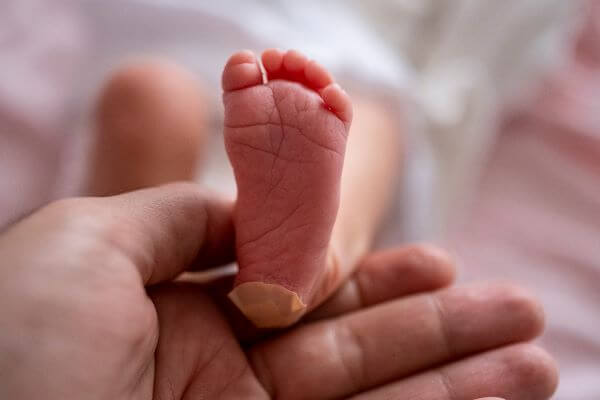
The Texas Newborn Screening Program requires two specimens to be collected from each newborn. A small amount of blood is taken from the newborn’s heel 24 to 48 hours after birth. A second specimen is collected at 7 to 14 days of age. The state’s public health laboratory analyzes the specimens.
As of 2023, the Texas Department of State Health Services (DSHS) laboratory screens for 55 conditions using dried blood spot specimens. (Texas hospitals and birthing facilities must screen for congenital hearing loss and critical congenital heart disease.) For details, refer to the latest list of disorders on the Texas Newborn Screening panel.
On January 1, 2024, the cost of the newborn screening kit will increase from $63.55 to $68.63. The purpose of this increase will be to support increased costs for operations and is not to add any new conditions to the Department of State Health Services newborn screening panel. The HCPCS code for billing the newborn screening kit is S3620.
For frequently asked questions about the newborn screening program, refer to the state lab’s FAQs on specimen collection and billing. TMA members who experience billing and coding problems can submit complaints to the Reimbursement Review and Resolution Service or contact the TMA Knowledge Center at (800) 880-7955.
Use and Storage of Dried Blood Spots after Newborn Screening
After testing, the DSHS keeps residual blood spots in a secure place for up to two years. By Texas law (Health & Safety Code Sec. 33.018 (b)-(c)), the residual blood spots may be used during that time. Residual blood spots are destroyed within two years unless otherwise permitted by the parent or guardian.
Uses within the two years include:
- Ensuring DSHS newborn screening tests, equipment and supplies are working
- Developing new tests for newborn screening
- Studying diseases that affect public health as allowed by law
If the parent gives their consent on the Parent Decision Form for Storage and Use of Newborn Screening Blood Spots, the residual blood spots may be stored safely for up to 25 years, and they may be used for public health research outside of DSHS. This research would study public health problems like cancer, birth defects or other diseases. No matter the parent’s choice, no information that can identify them or their child can be released outside DSHS without additional written consent. View the data use policy and a list of research uses that have been allowed by DSHS.
DSHS storage of residual blood spots is governed by Texas law as detailed below:
Received by DSHS prior to May 27, 2009
- Blood spots received by DSHS prior to May 27, 2009, for which written consent to retain was not given, have all been destroyed.
Specimen Collected May 27, 2009, through May 31, 2012
Specimen Collected June 1, 2012 or Later
- All blood spots are stored for up to 2 years and then destroyed unless the parent submits a completed Parental Decision form allowing for longer storage.
Additional Resources
DSHS maintains a website with the latest instructions, training videos, and clinical information related to newborn screening.
ACT Sheets – Action plans for all disorders that include immediate steps for physicians.
Critical Congenital Heart Disease (CCHD)
Texas Early Hearing Detection and Intervention (TEHDI)